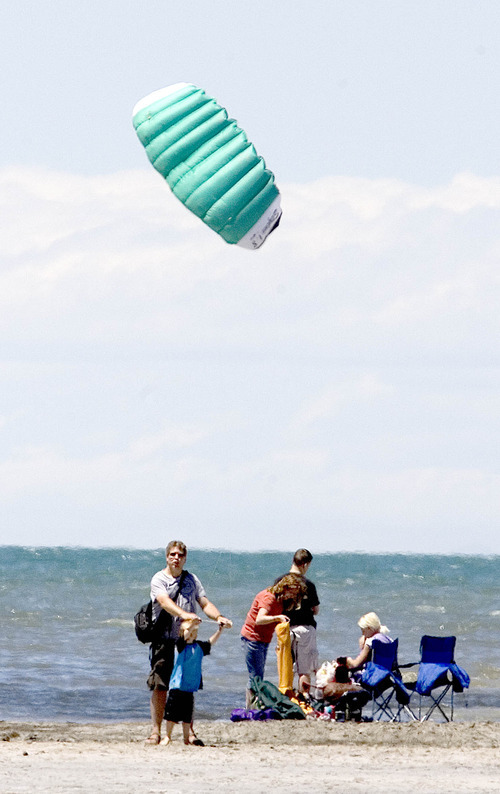This is an archived article that was published on sltrib.com in 2012, and information in the article may be outdated. It is provided only for personal research purposes and may not be reprinted.
The fever that swept much of the nation this spring also kept Utah relatively toasty.
Tucked inside the latest report from the National Oceanographic and Atmospheric Administration is a finding that the average temperatures from January through May were the second-highest since the Dust Bowl heat wave hit Utah in 1934.
While January through May temperatures averaged 43.7 degrees during the previous 65 years, Utah's average temperature was 47.1 this year, NOAA reported. In addition, the first five months of this year were fourth warmest since records began in 1895.
Nationwide, the heat was even more dramatic. Not only were the first five months of 2012 the hottest on record, but temperatures since last June were higher than during the same 12-month period in all the years since records began in 1895.
"We are part of the trend," said Simon Wang, an assistant professor in the plant soil and climate department at Utah State University and affiliate of the Utah Climate Center. "We have broken records nationwide — it's not just our state but many states."
The state climate data center noted, too, that May temperatures across Utah were higher than the seasonal norm, though they were not as warm as the record-busting temperatures of March and April.
Statewide in May, 162 daily and two monthly high records were either tied or broken. Meanwhile, just 32 record daily lows or ties were recorded, and just one monthly temperature record was broken.
"Climate change signals, you can see from this year, are widespread," said Wang.
But Larry Dunn, meteorologist in charge for the Salt Lake City office of the National Weather Service, had a different take on the 2012 trends.
"The temperature record for Salt Lake City is unequivocal," Dunn added. "It's getting warmer. I don't think anyone argues that's not true. The argument is always about why [it's getting warmer], and I'm not in a position to answer that question."
What all this data says about the future is anyone's guess. And, as Dunn noted: "A single year is just one more piece of data."
It's possible that the heat, coupled with the dry conditions, are setting up Utah for a mean wildfire season. But even that is hard to predict at this point, ahead of the summer's monsoon rains, said Dunn, whose team also puts together fire weather forecasts.
"If we get lots of rain with our thunderstorms, we won't get a lot of fires," he said. "But if we get a lot of lightning but we don't get a lot of rain, we'll get lots of fires. And if we don't get a lot of lightning, we won't get a lot of fires."
Although this year's climate has some people worrying, it also offers some opportunities.
At Snowbird Resort in Little Cottonwood Canyon, it was so snowy and cool last year that skiing continued through Independence Day even as some of the usual summer activities had gotten under way.
This year, visitors began enjoying the ropes course, the alpine slide, the bungee trampoline and other attractions last weekend.
"There's a lot going on," said resort spokeswoman Emily Moench, "that we normally couldn't do if was cooler."
Twitter: @judyfutah —
America sizzles
Cities nationwide broke longstanding high-temperature records this year for the January through May period. Here are some of the hottest, including the number of years between the old record and 2012:
Sault Ste. Marie, Mich. • 124
Sioux Falls, S.D. • 119
Scottsbluff, Neb. • 117
Sioux City, Iowa • 115
South Bend, Ind. •112
Peoria, Ill. •111



